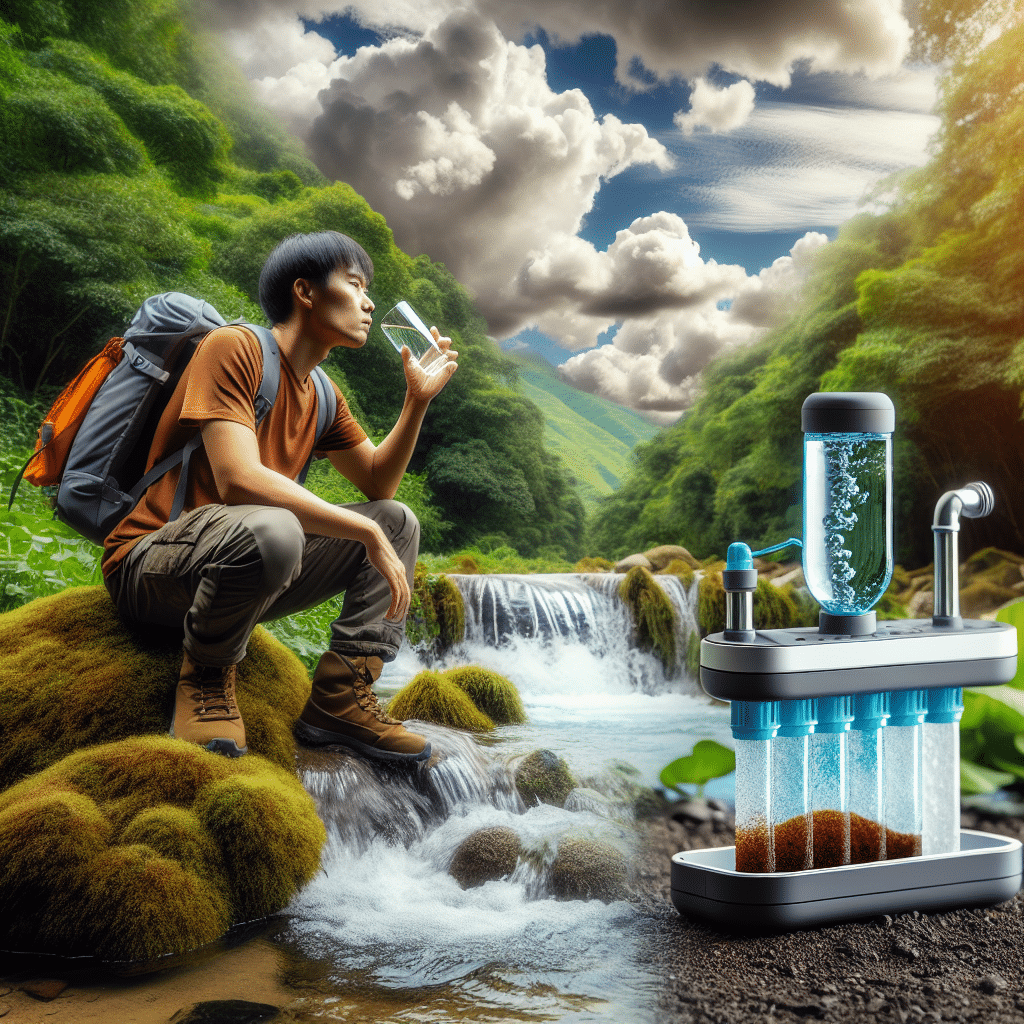Understanding Portable Water Purifiers
Portable water purifiers are essential tools for ensuring access to clean drinking water while on the move. Often used by campers, hikers, travelers, and emergency responders, they effectively remove contaminants such as bacteria, viruses, and sediments. Understanding how to use these devices efficiently is crucial for ensuring safe drinking water.
Types of Portable Water Purifiers
-
Filtration Systems
- Gravity Filters: Utilize gravity to pull water through a filter element. Ideal for group camping or stationary use.
- Pump Filters: Require manual operation to force water through a filter. Quick to use but can be labor-intensive.
- Inline Filters: Often attached directly to a hydration pack or bottle, providing continuous filtration as you drink.
-
UV Purifiers
- Use ultraviolet light to kill pathogens. They are lightweight and effective, requiring batteries, which may be a consideration in remote areas.
-
Chemical Purifiers
- Typically involve iodine or chlorine tablets. While effective against many pathogens, the taste may be unappealing, and they take time (usually 30 minutes) to purify water.
How to Choose the Right Portable Water Purifier
-
Water Source: Understand where you will be sourcing your water. Lakes, rivers, and municipal taps have different levels of contamination.
-
Contaminants: Choose a purifier based on the expected contaminants. For instance, UV purifiers are great for viruses but may not filter sediments.
-
Weight and Size: A lightweight and compact design is paramount for backpackers. Ensure it fits easily in your gear without adding unnecessary bulk.
-
Flow Rate: Assess how quickly the purifier can process water. This is particularly important during group activities or if you’re in a hurry.
-
Ease of Use: Look for a model that can be operated easily, even with limited experience. A complicated device may lead to misuse or ineffectiveness.
Efficient Usage Techniques
Pre-Treatment and Sourcing
-
Choose Clear Water: Always aim for the clearest water possible to extend the life of your filter and enhance efficiency. Avoid muddy or highly turbid sources.
-
Pre-filtration: If the water source is unclear, pre-filter using a cloth or coffee filter to remove large particles before using your purifier.
-
Let Water Settle: Allowing time for sediments to settle can help, as the clearest water will typically be at the top.
Operating Your Purifier
-
Follow Instructions: Always read and follow the manufacturer’s instructions carefully to ensure you’re using the unit correctly.
-
Regular Maintenance: Clean and maintain your purifier according to guidelines. This includes backflushing or replacing filter cartridges as needed.
-
Keep Equipment Dry: Store your equipment in a dry place to avoid mold and damage. Ensure that any electronic components are protected from moisture.
-
Sterilize Before Use: If your filter allows it, sterilize the water reservoir and parts before your first use and after long periods of storage.
-
Volume Limits: Be aware of the maximum volume each purifier can handle over its lifespan. Pay attention to replacement timelines and filter life based on usage.
Post-Purification Practices
-
Store in Clean Containers: After purification, transfer water to a clean, sterilized bottle. Using reusable water bottles can help reduce plastic waste.
-
Use Distilled Water Optionally: For sensitive use-cases (like baby formula preparation), consider using distilled water if available in your travels.
Emergency Situations
In emergencies like natural disasters, portable water purifiers can be lifesavers. Here’s how to maximize their efficiency:
-
Know Your Surroundings: Familiarize yourself with potential water sources around your area.
-
Keep Your Purifier Accessible: Store your purifier conveniently in your emergency kit along with essential supplies.
-
Establish a Filtering Routine: Create a systematic approach to gathering and filtering water, especially if resources are limited.
Environmental Considerations
When using portable water purifiers, it’s important to engage in environmentally responsible behavior. Here’s how you can help:
-
Follow Leave No Trace Principles: Avoid contaminating water sources by filtering water away from the shore and ensuring you don’t leave trash.
-
Choose Carbon Filter Options: Opt for purifiers with activated carbon filters for better taste and odor removal, helping promote sustainability.
-
Understand Safe Disposal: Properly dispose of any used filtration components according to local guidelines to minimize environmental impact.
Long-term Use and Investment
Investing in a high-quality portable water purifier can save money in the long run. Certain factors to consider:
-
Durability: Look for rugged designs that can withstand the rigors of outdoor use.
-
Warranty and Support: Choose brands that offer good customer support and warranty options, which can be helpful for repairs or replacements.
-
Position in the Market: Check online reviews, manufacturer reputation, and performance from real users.
Conclusion
Utilizing portable water purifiers efficiently requires understanding the types available, how to select the right one, and maintaining proper practices during and after purification. By following these guidelines, users can ensure safe drinking water in various situations, whether adventuring outdoors or dealing with emergencies.
